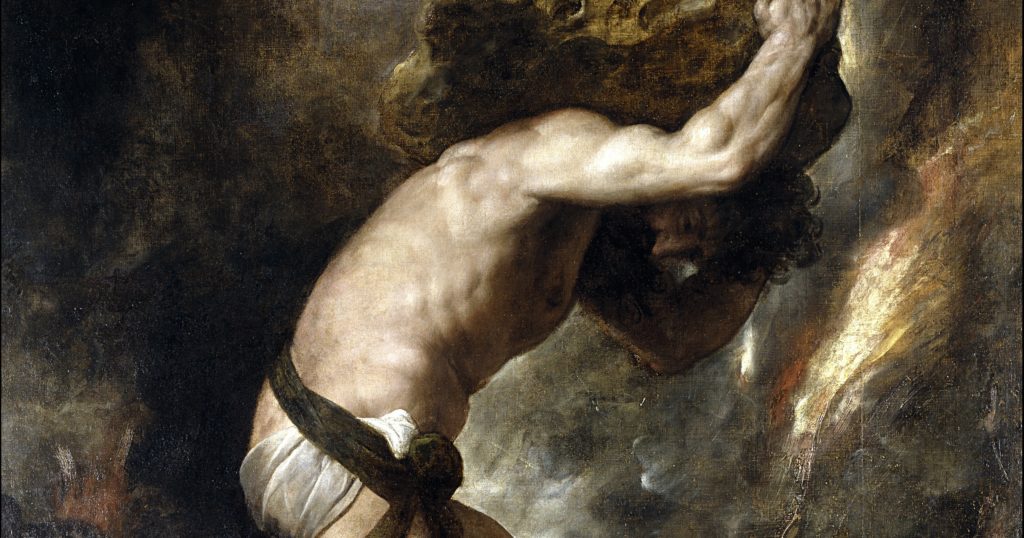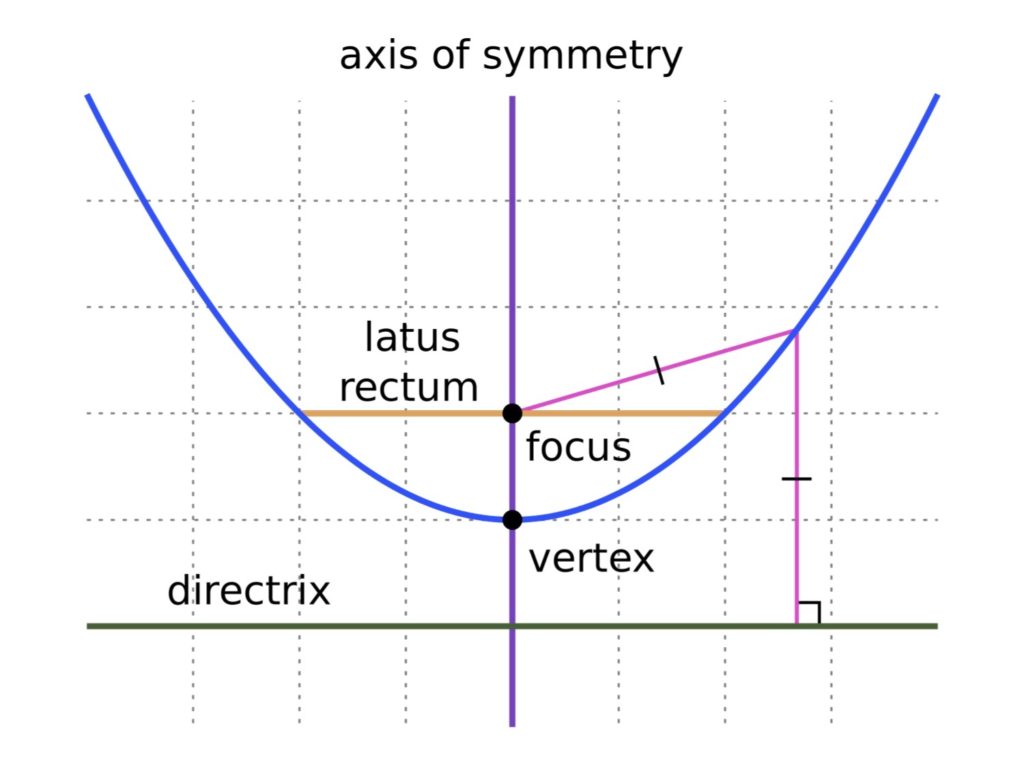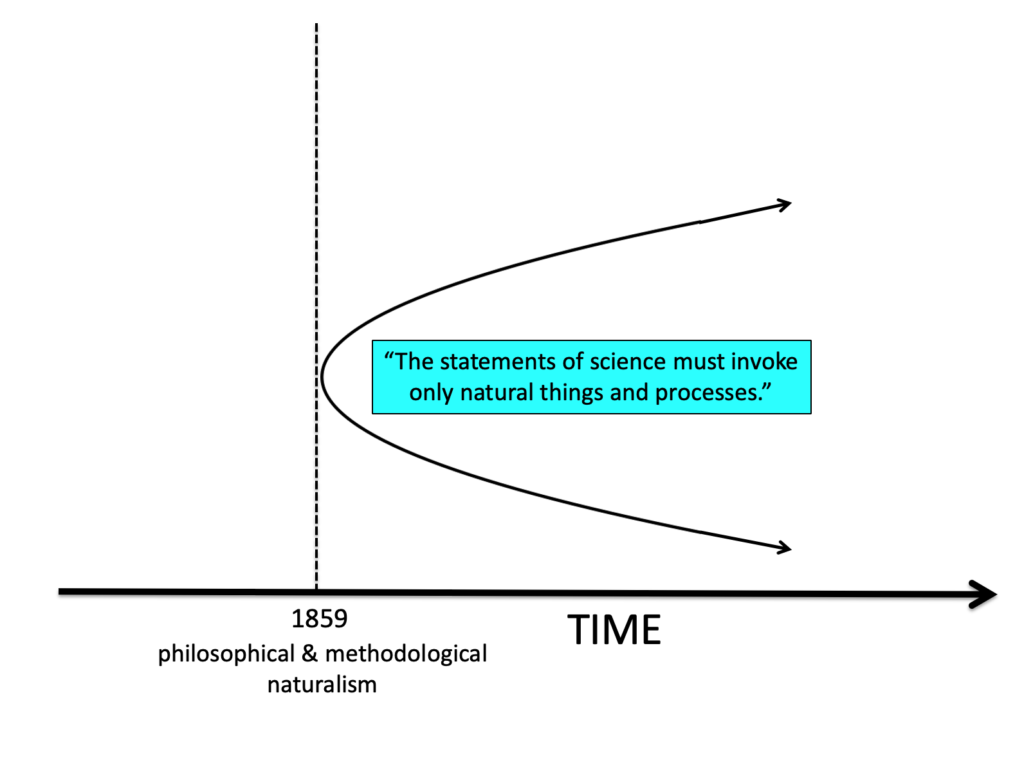 Evolution
Evolution
 Intelligent Design
Intelligent Design
Trapped in the Naturalistic Parabola


The principles of an alien [thought] collective are, if noticed at all, felt to be arbitrary and their possible legitimacy as begging the question. The alien way of thought seems like mysticism. The questions it rejects will often be regarded as the most important ones, its explanations as proving nothing or as missing the point, its problems as often unimportant or meaningless trivialities.
Ludwik Fleck, 1935
When paradigms enter, as they must, into a debate about paradigm choice, their role is necessarily circular. Each group uses its own paradigm to argue in that paradigm’s defense.
T.S. Kuhn, 1970
…a wide chasm has been fixed between us, so that those who want to cross from this side to you cannot do so, nor can they cross from your side to us.
Luke 16:26
Don’t Attempt the Impossible
Good advice, right? Trisecting an angle using only a compass and an unmarked straight edge, dividing by zero, using your cell phone inside a Faraday cage, reanimating a tin of smoked herring, finding a reasonably priced apartment in San Francisco…no, no, no, no, no. Don’t even bother trying.
Speaking of impossibility, you may have noticed a strange loop which arises spontaneously in many sectors of the intelligent design debate. This strange loop — which I describe below, with detailed examples left for another occasion — is philosophically fascinating, but also, like other intractable puzzles, a source of unending bewilderment. It seems impossible, once one is caught up in the loop, to escape onto the plane where rational progress could be made.
The metaphor of a “strange loop” is helpful, but for this particular puzzle, I prefer another image: a parabola. Figure 1 shows this familiar conic section, with its parts labeled. As you may recall from high school geometry, parabolas extend infinitely along their axis of symmetry.

Extend infinitely — in what follows, that will be the defining property to keep in mind. Consider next a representative dialogue between an evolutionist (call him Evolver) and an intelligent design proponent (call him Designer) about one aspect of the origin of life: the prebiotic formation of proteins.
Designer: The formation of proteins from amino acids cannot occur in an aqueous prebiotic setting. Hydrolysis will attack the peptide bonds —
Evolver: Excuse me for interrupting, but that is not how proteins formed.
Designer: In the Oparin-Haldane model —
Evolver: You mean the Oparin-Haldane strawman?
Designer: But their “thin organic broth in a reducing atmosphere” was the leading prebiotic scenario for much of the 20th century.
Evolver: Hello, it’s 2020. The field has moved on. Proteins exist, so using a prebiotic soup model for their origin, when we already know that doesn’t work, cannot be right. You need to address the actual prebiotic pathway that occurred, not some old and erroneous hypothesis.
Designer: All right, what is the actual prebiotic pathway to proteins?
Evolver: We’re working on that. The tour bus is leaving, try to keep up.
Okay, So What Is Going on Here?
We could continue this dialogue indefinitely, with Designer critiquing as unworkable, or false, every prebiotic protein origins hypothesis put forward by Evolver — and yet Evolver stands there, untroubled, yawning and checking the messages on his iPhone.
And that is because Evolver is not committed to the causal sufficiency, or truth, of any particular scientific hypothesis about the origin of proteins. Rather, he is committed to finding an answer of a given philosophical form —namely, that the pathway, whatever it turns out to be, occurred via an undirected physical process. That still-unknown pathway, once it is discovered and shown to work, will mark reaching the endpoint which defines success in the origin-of-proteins dimension of abiogenesis research.
Until then? Just keep looking.
If we dissect Evolver’s reasoning, therefore, and lay its pieces on the lab bench, they would look something like this:
- Proteins exist.
- Thus, some natural pathway also exists from chemistry to proteins.
- The task of science is to find (2), in order to explain (1).
- Until that task is done, abiogenesis research goes on.
What do these propositions, (1) through (4), mean for Designer?
Trapped Like a Philosophical Rat
In his discussions with Evolver about the origin of proteins(or any biological object or system, for that matter), Designer will be trapped forever inside the Naturalistic Parabola.
Designer is doomed to perpetual frustration, of the very worst kind — sheer impossibility. Nothing he can say to Evolver, as long as Evolver holds consistently to his parabola-defining premise, will make the least bit of difference. Sisyphus would understand.
Remember that property of parabolas noted above — their infinite extent? Suppose we tip the parabola in Figure 1 on its side, and lay it next to a timeline (Figure 2).

While the Naturalistic Parabola is defined nowadays by a philosophical rule, we can say that its temporal vertex — its starting point in the history of science — is located somewhere around 1859, and the publication of Darwin’s Origin of Species. Its end, however, is nowhere in sight.
Nowhere in sight— because no finite number of scientific falsifications (that is, of individual hypotheses for events like the origin of proteins) can refute the unconditional philosophical rule which defines the Naturalistic Parabola:
The statements of science must invoke only natural things and processes.
Thus said the National Academy of Sciences in 1998. This is the rule of methodological naturalism (MN). MN is not a scientific proposition. It is an a priori dictum and, as such, cannot be refuted or tested by observation.
Now, you may think MN is unnecessary, or even unsound, for the practice of science. (Another time, I hope to discuss the surprising fact that many atheist scientists and philosophers disagree strongly with MN, when MN is proclaimed as an unconditional rule.) The National Academy, however, is not listening to you, nor are federal courts, nor are organizations such as the American Federation of Teachers — all official bodies whose remit includes defining “science” for academic practice and public policy, in matters such as curricula, funding decisions, employment, and peer review.
All right: we’ve put a serious problem on the table for discussion. It looks very much like the dialogue between Evolver and Designer, despite their apparent engagement of the same scientific questions — e.g., how did life start? — is not a genuine dialogue at all.
It is, rather, an exercise in futility. One side, Designer, has convinced himself that the evidence bears against the scientific hypotheses put forward by Evolver, and that by focusing on that point — the disconfirming evidence — Designer is doing what counts. If only I can persuade Evolver that his hypotheses don’t work, Designer thinks, Evolver will change his mind about the origin of proteins, and ultimately, the origin of life.
Poor deluded Designer, says Evolver to himself — he really is naïve. There is no escaping the parabola. It runs the show.
Prospectus
At this point, we could look at what happened during the Darwinian Revolution, and thereafter, to create the Naturalistic Parabola. We could look at some examples of how the Parabola operates — common phrases that tell one, “Hey, you’re trapped in the Parabola: stop kicking and get out.” We could provide the Parabola Escape Instructions. All in due time.
Notes:
- Ludwik Fleck, Genesis and Development of a Scientific Fact (Chicago: University of Chicago Press, 1979 [1935]), p. 109.
- Thomas S. Kuhn, The Structure of Scientific Revolutions (Chicago: University of Chicago Press, 1970), p. 94.
- Trisecting an angle with a compass and unmarked straight edge, and dividing by zero, are mathematical impossibilities; cell phone usage in a Faraday cage is a physical impossibility; spontaneous generation (bringing the herring back to life) is a biological impossibility; whereas finding an affordable apartment in San Francisco is not impossible at all, but only a practical nightmare which supplies grade-AAA material for musing about the inequities of life.
- Working Group on Teaching Evolution, National Academy of Sciences, Teaching About Evolution and the Nature of Science (Washington, DC: National Academy Press, 1998), p. 42.
- If you doubt this, ask yourself what imaginable observation would refute MN.
Image: Detail from Sisyphus, by Titian, in the Prado Museum, Public domain.
